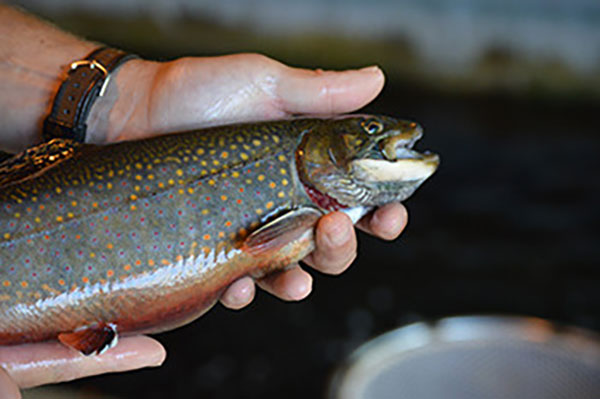IDNR/MDNR Reports
 Fisherman Holding Trout
Fisherman Holding Trout
In addition to Michigan’s walleye and pike seasons, Indiana and Michigan kicks off their inland trout fishing seasons Saturday.
Anglers are reminded that in Upper Peninsula waters, the walleye and northern pike possession seasons openers are delayed until Sunday, May 15. Michigan’s muskellunge possession season on all Great Lakes, inland waters, the St. Marys River, Lake St. Clair, and the St. Clair and Detroit rivers opens Saturday, June 4. Remember that catch-and-release fishing for muskellunge is open all year.
In Indiana, nearly 22,000 trout are being stocked by the DNR Division of Fish & Wildlife in 16 different streams across Indiana for inland trout season.
Indiana’s trout come from Curtis Creek Trout Rearing Station near Howe in LaGrange County and average roughly 11 inches in length. To find a stocked stream near you, see the trout stocking plan at bit.ly/36XmSgi.
One body of water that is absent from this year’s April stocking list is the tailwater of Brookville Lake in Franklin County. Scheduled maintenance by the U.S. Army Corps of Engineers is delaying rainbow trout stockings there until fall.
Indiana’s bag limit for trout in inland waters, other than Lake Michigan and its tributaries, is five per day with a minimum size of 7 inches. No more than one of these can be a brown trout. Additionally, any harvested brown trout caught below the Brookville tailwater must be 18 inches or larger. There is no closed season for taking trout from inland lakes.
Michigan’s trout stream regulations vary, often from one stream to another, so be sure to check out the 2022 Michigan Fishing Guide and Inland Trout & Salmon Maps for more details.
To fish for trout, anglers 18 and older need an Indiana fishing license and a trout/salmon stamp. Both can be bought at on.IN.gov/INhuntfish. In Michigan, the trout stamp is included with the license.
To purchase a Michigan fishing license, visit Michigan.gov/DNRLicenses.
Trout will bite on a variety of artificial baits such as spinners and flies, but natural baits such as worms and bee moths tend to be the most popular.
Clean those boots!
Anglers are reminded that they can make a real difference in helping to prevent the spread of invasive species by taking the time to clean, drain and dry waders and gear before heading to a new location.
Two invasive species, New Zealand mudsnail and didymo (rock snot), have been detected in Michigan. Both thrive in high-quality waters and can have harmful effects on stream ecosystems.
The NZMS Collaborative offers these simple steps for cleaning boots and waders:
- Stomp and inspect as soon as you leave the water to remove attached debris.
- Brush waders, soles and laces to loosen remaining debris and mud.
- Spray boots and waders thoroughly with a disinfecting agent.
- Rinse after 20 minutes.
- Dry waders thoroughly before next use.





